The Alvastra project is currently in its final stages of registration work and we are all working intensely with the registration of these last finds. Greg and I are currently working with the flint finds from the Middle trench where some very nice looking scrapers have showed up. Today, I wanted to show you some of them. Scrapers were commonly used during the Stone Age for activities such as skin preparation and shaping of wood and bone. Among the flint finds from the Middle trench there are several kinds of scrapers, of high quality flint, that are exquisitely produced from both flakes and blades. But before you start studying the scrapers, please have a look at the drawings immediately below showing the different parts of a blade (and flake) and also an example of what a complete flake and blade can look like. With this quick guide you can more easily can follow my descriptions in the text.
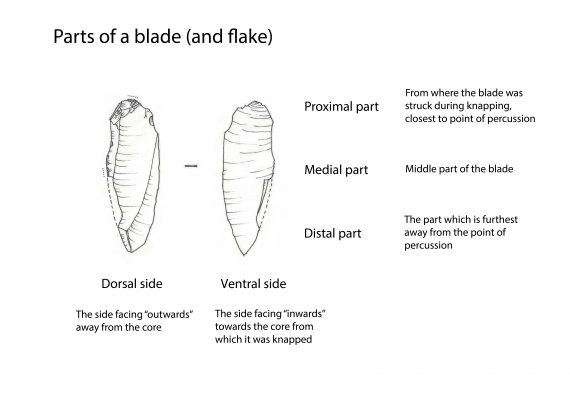
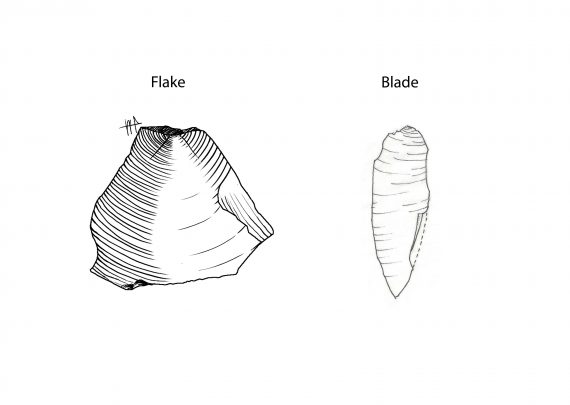
And now, the scrapers! If you press the scraper’s FID-numbers you will be brought to the Swedish Historical Museum’s online database Sök i Samlingarna where you can find all the information related to them. Here we go.
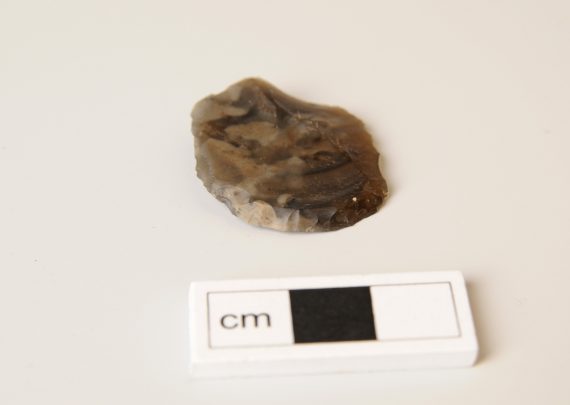
FID1282185: Round scraper made from a flake, Senonian flint. Retouch is located all around the flake except for the part by its proximal end.

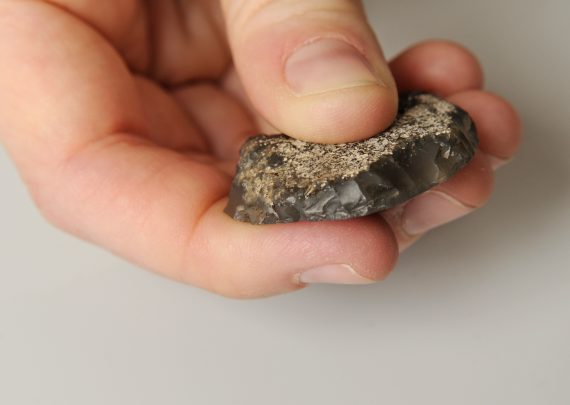
FID1282241: Round scraper made from a flake, Senonian flint. It has been retouched all the way around, but its finest retouch is located on the distal part of the flake where it also is showing traces of use wear. On the dorsal part of the scraper a piece of cortex is remaining from the flint nodule’s original outside cortex.
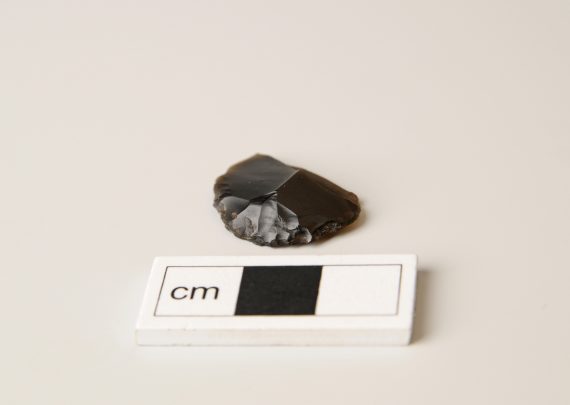
FID1282488: Blade scraper made from the proximal part of a blade, Senonian flint. The opposite side of the scraper is broken.
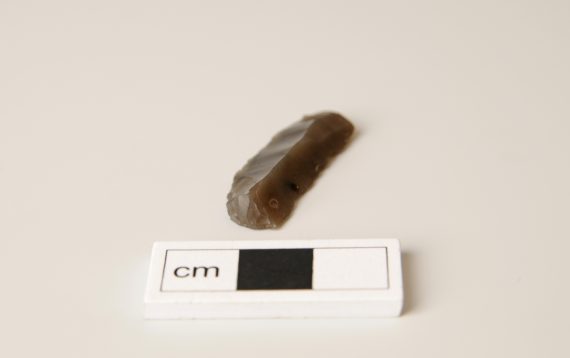
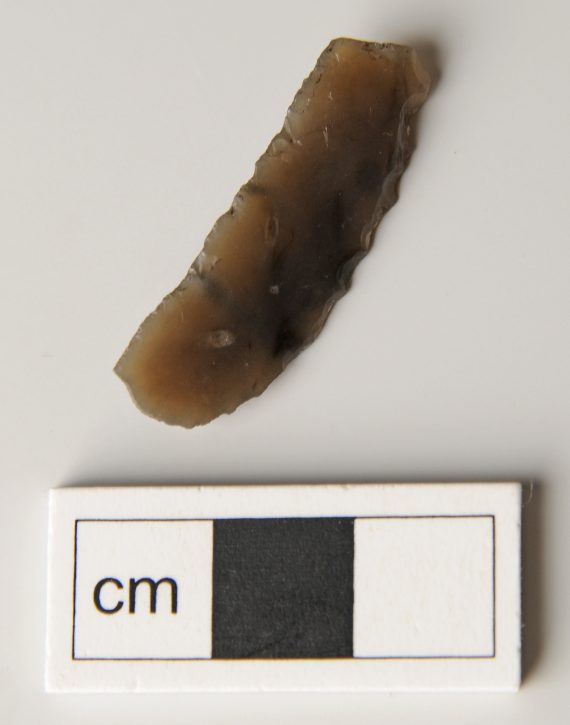
FID1283037: Blade scraper, Senonian flint. The retouch is located on its proximal end as well as on one of the longer sides. It is interesting to note that the opposing long side as well as the distal end of the scraper are showing traces of use wear. This means that all sides of the scraper have some sort of retouch, either knapped or produced through usage of the scraper.
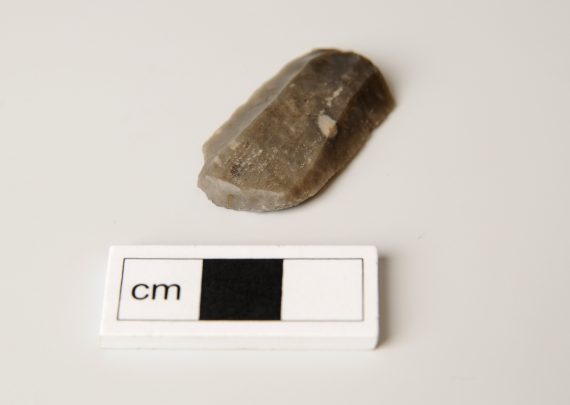
FID1283113: Blade scraper, Senonian flint. The retouch is located on the distal part of the blade but the sides of the scraper are also showing signs of use wear. A polished surface remains on the dorsal side of the blade. This is not uncommon to see on the flint material from Alvastra and is due to the fact that many of the artifacts are knapped from polished flint axes. See Greg’s previous blog post about this (link here).
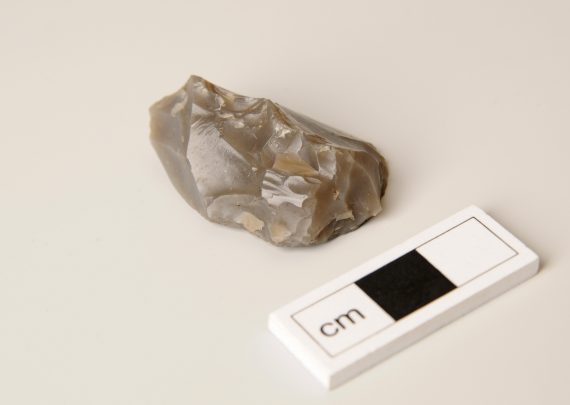

FID1282476: End scraper made from a flake, Senonian flint. The scraper has a prominent ridge which is shaped in a so called bilaterally crested manner, which means that flakes have been knapped from this ridge in two directions. The scraper is also showing an unusual shine on its dorsal side, which might be remains of sickle gloss.
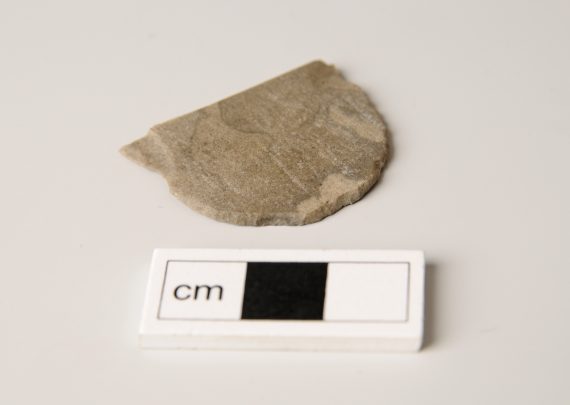
FID1283102: Scraper made from a flake knapped from an axe, Danien flint. This is apparent from the polished surface covering the dorsal side of the flake. The scraper has been broken but the remaining part has been retouched on all sides. The retouch is very fine and particularly delicate for this larger size of scraper.
Scrapers are a common sight in the Alvastra material and many more will be put into the system before the registration is done. If you want to read more about Alvastra’s scrapers you can read about the unusual scraper that Greg previously found in the material (link here).
Until next time!
Bli först att kommentera